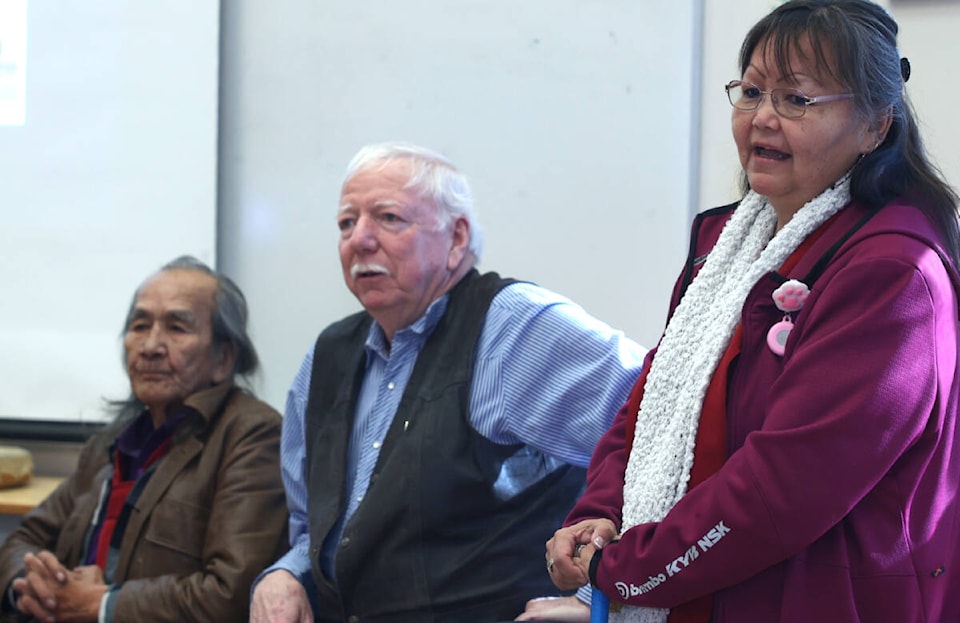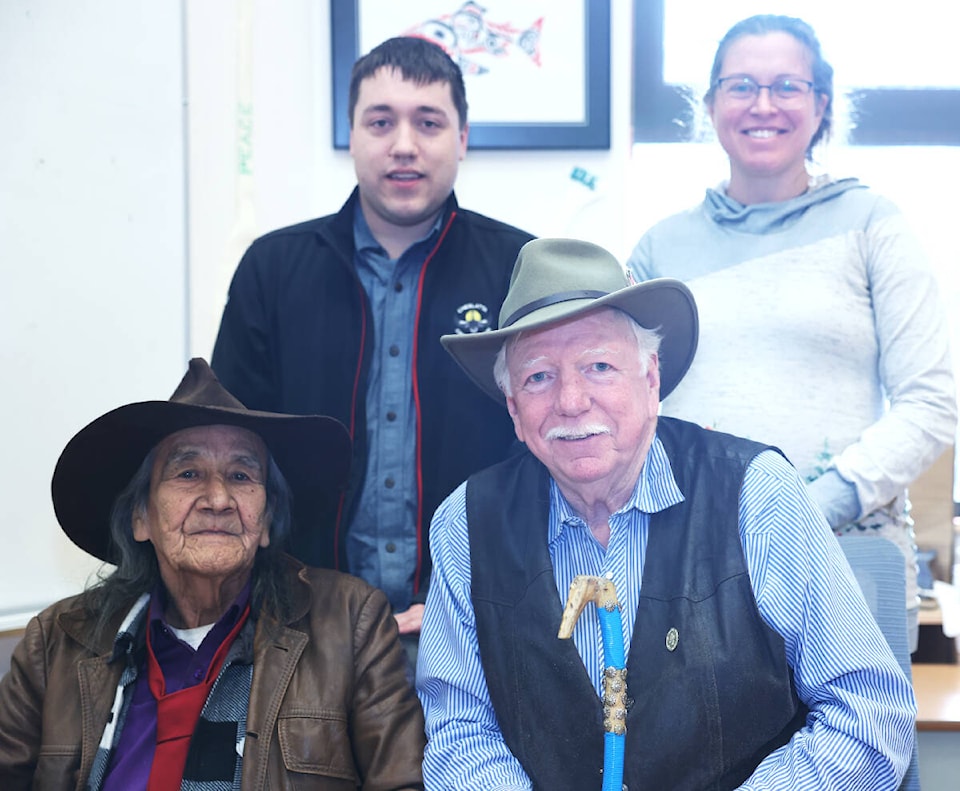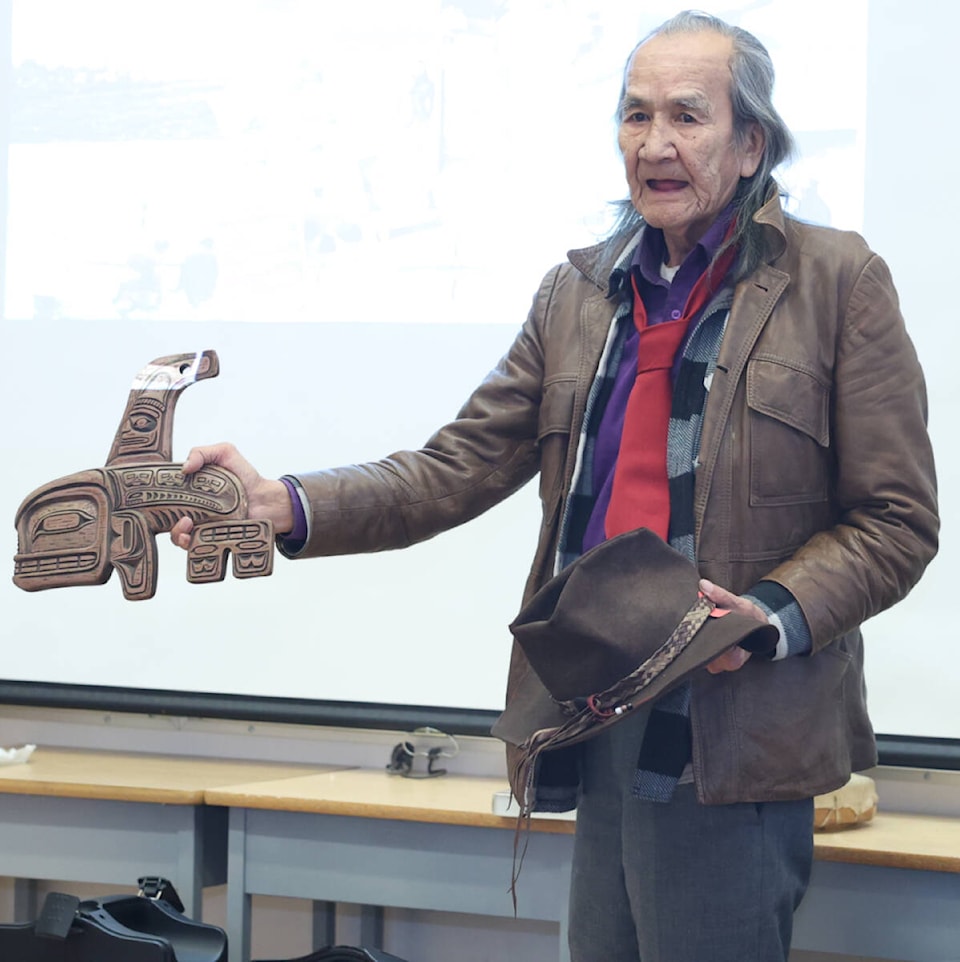On Feb. 14, Mike Robertson, Cheslatta Carrier Nation senior advisor did a historical presentation on Cheslatta at Decker Lake Elementary School. The presentation was focused on the historical background of the First Nation community.
Robertson also did another presentation at Lakes District Secondary school on Feb. 8.
John Casimel, Cheslatta Carrier Nation elder; Janet Whitford, Cheslatta Carrier Nation councillor; and Nolan Thiffault, Cheslatta Carrier Nation researcher and archivist, also attended the presentation.
Through this presentation, Robertson wanted children to learn about the history of the Cheslatta Carrier Nation. He said the children should know about the importance of land and water, which helps human survival.
During the presentation, Robertson said that the Cheslatta Carrier Nation鈥檚 current total population is around 360 and only 140 people live within the Southside. The Cheslatta people were forced to move from Cheslatta Lake 70 years ago. He added that John Casimel was seven years old when he had to leave his original home.
He said five or six primary families lived in three different villages, and Chief Louie鈥檚 family was one of them. He showed an old photograph of a village gathering with rows of white fish and char sun-drying in the background. He stated that these fish were caught in October and dried for winter consumption.
Robertson said that the Cheslatta language traces back to Athabasca. He added that although they have a different local language, the main root spreads throughout Western North America. Athabaskan languages and culture came down from the Arctic Circle and travelled to Canada and Central America.
He emphasized that Cariboo was the primary meat source for the Cheslatta people. However, they hunted bears, gathered berries and medicine from the high mountains, and fished in the freshwater. He further stated that the Cheslatta people traded with other First Nation communities, especially on the coast, to get Salmon and seaweed. To this day, seaweed is still considered a delicacy among the community鈥檚 elders. Due to natural barriers, Salmon could not come upstream, which was another reason for them to trade with other communities.
He said that the people of Cheslatta used horses and dugout canoes made of cottonwood trees to travel long distances.
At the end of the presentation, Robertson invited the children to visit the Southside and spend some time at the Cheslatta Carrier Nation鈥檚 community centre and administration building to look at their archives of historical artifacts and information.





